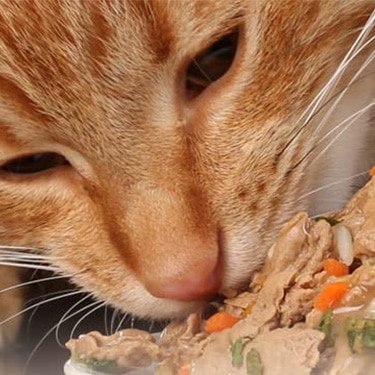
-
Find the right food for your petTake this quiz to see which food may be the best for your furry friend.Find the right food for your petTake this quiz to see which food may be the best for your furry friend.Featured products
 Hill's Science Diet Adult Chicken & Beef Entrée Dog Food
Hill's Science Diet Adult Chicken & Beef Entrée Dog FoodChicken & Beef Entrée in a delicious loaf with complete & balanced nutrition to help keep adult dogs active and healthy
Shop Now Adult Chicken & Barley Recipe Dog Food
Adult Chicken & Barley Recipe Dog FoodSupports lean muscle and beautiful coat for adult dogs
Shop Now Adult Large Breed Chicken & Barley Recipe Dog Food
Adult Large Breed Chicken & Barley Recipe Dog FoodSupports healthy joints, lean muscle, and beautiful coat for large breed dogs
Shop NowFeatured products Adult Turkey & Liver Entrée Cat Food
Adult Turkey & Liver Entrée Cat FoodPrecisely balanced nutrition with the delicious taste of minced turkey & liver to help fuel the energy needs of cats during the prime of their life
Shop Now Senior Vitality Adult 7+ Tuna & Vegetables Stew
Senior Vitality Adult 7+ Tuna & Vegetables StewImproves Everyday Ability to Get Up & Go
Shop Now Adult Tender No Corn, Wheat, Soy Chicken & Vegetables Stew Cat FoodShop Now
Adult Tender No Corn, Wheat, Soy Chicken & Vegetables Stew Cat FoodShop Now -
Dog
- Dog Tips & Articles
-
Health Category
- Weight
- Food & Environmental Sensitivities
- Urinary
- Digestive
- Joint
- Kidney
-
Life Stage
- Puppy Nutrition
- Adult Nutrition
- Senior Nutrition
Cat- Cat Tips & Articles
-
Health Category
- Weight
- Skin & Food Sensitivities
- Urinary
- Digestive
- Kidney
-
Life Stage
- Kitten Nutrition
- Adult Nutrition
Featured articles How to Properly Mix Wet & Dry Pet Foods
How to Properly Mix Wet & Dry Pet FoodsAn Orange cat eating from a bowl filled with mixed food
Read More The Science Behind Our Love for Pets
The Science Behind Our Love for PetsLearn the scientific reasons why we have such strong connections with our pets, and what science says about the love between humans and our furry friends.
Read More What Is Littermate Syndrome? Pet Adoption Guide
What Is Littermate Syndrome? Pet Adoption GuideLearn more about littermate syndrome in dogs and cats and how to successfully navigate adoption and early socialization processes.
Read More -


As lovable as dogs are, let's face it: They sometimes do things that are kind of gross. One of those gross behaviors is raiding your cat's litter box and eating what they find there. Learn why your pup is prone to this behavior and how to keep dogs out of the litter box for good.
My Dog Eats Cat Poop from the Litter Box

While it may be foul to humans, eating cat poop is somewhat normal dog behavior, says American Kennel Club (AKC). Dogs are natural scavengers who tend to devour anything with a strong smell, even poop. To the highly attuned nose of a dog, cat poop smells like cat food, which, as far as your dog is concerned, is a special treat. Once your pooch discovers these tasty nuggets in the litter box, it's like they've hit the jackpot.
But despite this behavior being enjoyable for your dog, it should be discouraged, and not simply because it's gross. Cat feces can carry harmful bacteria, including salmonella, which could make your dog sick. It also can carry a parasite that causes a condition called toxoplasmosis that can be harmful to humans if your dog licks your face, says the Centers for Disease Control and Prevention. Cat litter can also harm your dog if consumed in large enough quantities to cause an intestinal blockage.
How to Keep Dogs Out of the Litter Box
Keeping your dog out of the litter box might be easier said than done. The best method depends on the size, temperament and trainability of your dog. Your cat might also have a say in whether certain methods will work.
Clean the Litter Box Often
One of the most effective methods is scooping the box often, suggests PetSafe. While it might not be realistic to clean up after your kitty every time they go, cleaning the box once or twice a day will help to cut down on your dog's opportunities. A self-cleaning robot litter box can make this task easier, if your cat will tolerate it. You could also switch to an odor-neutralizing litter to discourage your pup.



Tasty Tips
Train Your Dog
The most permanent way to keep your pup away from the cat box is to train them to leave it alone. Before you begin, make sure your dog is getting high-quality dog food so that they're not missing any nutrients in their diet. They should also be getting plenty of exercise and mental stimulation so that they aren't exploring the litter box out of boredom. Once those bases are covered, try following these steps from the AKC to teach your dog the "leave it" command:
Hold a treat on the floor under one hand and allow your dog to sniff it.
When your dog loses interest and gives up, say "leave it" as they're turning away.
With your free hand, give them a better treat than the covered one.
Gradually work up to telling them to "leave it" while they're still inspecting the treat. Reward them with a better treat when they turn away.
Once they learn to associate the command with getting a better treat than the one they're investigating, practice letting them sniff the litter box and telling them to "leave it."
Restrict Access
If all else fails, you might simply need to restrict your dog's access to the litter box. If you have a small dog, this might be as simple as elevating the litter box out of reach, or placing it inside a bathtub. For larger dogs, a covered cat box might work if your cat will tolerate a lid. If your cat vetoes a lidded box, installing a pet gate or a cat flap to the room where the litter box is stored might be your best option.
Whichever method you try, be sure to keep your kitty's preferences in mind. If you need to relocate the litter box, move it gradually, in small increments, to give your cat time to get used to the idea. Similarly, changing litter should be done gradually, mixing a little bit of the new litter with the old and increasing new litter slowly as your cat becomes used to it.


Jean Marie Bauhaus is a pet parent, pet blogger, and novelist from Tulsa, Oklahoma, where she usually writes under the supervision of a lapful of fur babies.
Related products

Supports healthy joints, lean muscle, and beautiful coat for large breed dogs

Supports lean muscle and beautiful coat for adult dogs

Chicken & Barley Entrée in a delicious loaf with great taste and precisely balanced nutrition to support 5 essential building blocks for lifelong health

Chicken & Beef Entrée in a delicious loaf with complete & balanced nutrition to help keep adult dogs active and healthy
Related articles

Wondering where can I buy a dog? Consider adoption and explore the pros and cons of adopting a dog from a breeder versus an animal shelter.

Your dog's coat and skin are a big part of your dog's overall health. Ensure you keep your dog's coat healthy, by following these simple tips.

Learn how to help keep your dog's immune system in tip-top shape, including nutritional immune system support for dogs and other strategies.

Discover how the field of dog science is giving us more and more insights into the inner workings of our furry best friends.

Put your dog on a diet without them knowing
Our low calorie formula helps you control your dog's weight. It's packed with high-quality protein for building lean muscles, and made with purposeful ingredients for a flavorful, nutritious meal. Clinically proven antioxidants, Vitamin C+E, help promote a healthy immune system.
Put your dog on a diet without them knowing
Our low calorie formula helps you control your dog's weight. It's packed with high-quality protein for building lean muscles, and made with purposeful ingredients for a flavorful, nutritious meal. Clinically proven antioxidants, Vitamin C+E, help promote a healthy immune system.

